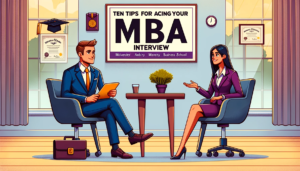
Every year, Gurufi editors help hundreds of applicants produce personal statements that get them into elite programs in STEM, humanities, social sciences, and the arts. All of our consultant-editors have PhDs from Ivy League / Oxford / Cambridge and we can link you with an editor whose background aligns with your intended field.
Applying to graduate school is a ton of work. GRE, letters of recommendation, revising work samples, and personal statements… Moreover, people rarely apply to just one school; when I applied, I applied to a dozen. The fear people have is that this requires them to write a dozen Personal Statements. So, can you repurpose your essays, or do you need to create a unique essay for each application?
The answer to both questions is “yes.”
If you’re confused, let me explain. If you’re applying to a dozen graduate schools, the easiest process is to begin with a template essay that you can repurpose for all of your applications. You then take that template and customize it for each of the schools you’re applying to. The most straightforward method is the two-thirds / one-third method where you write the first two thirds of the essay in a way that can be used for all applications. And then, you write a custom final two paragraphs for each particular school.
The one obvious caveat is that sometimes (though rarely) Master’s and Ph.D. programs will have their own questions / prompts and you will have to respond to them. In such instances, don’t try to shoehorn in your old text for questions that don’t quite fit. The bad news is that if you want to apply to those schools… it’s gonna take a bit of extra work. In every other case, you can use the two-thirds / one-third method.
The Foundation: A Template Essay (The First Two-Thirds)
The initial step in crafting your personal statement is to develop a robust template. This template serves as a base for all your applications, ensuring consistency in presenting your background and motivations. The first two-thirds of this template should focus on two key areas:
- Your Background
Your background forms the cornerstone of your personal statement. It’s essential to delve into your educational and professional experiences, highlighting how they have shaped your interest and prepared you for graduate studies. In other words, tell your story in a way that explains “why grad school? Why this subject?” This part of the essay should be a reflective narrative, weaving together your past experiences and achievements to showcase a coherent journey toward your chosen field.
- Interest in the Field
The next segment should pivot to how you became interested in your specific area of study. Here, storytelling is paramount. Recount the moments, whether academic, professional, or personal, that sparked your passion for the subject. This section is not just about stating your interest but illustrating it through experiences and insights you’ve gained over time. It should resonate with a sense of genuine curiosity and commitment to the field.
Customization: Tailoring the Final Third
While the first two-thirds of your essay lay the foundational narrative, the final third is where customization comes into play. This tailored segment should address three critical aspects:
- Your Academic Aspirations
Discuss the specific questions or ideas you wish to explore in graduate school. This section is your opportunity to demonstrate that your goals align with the advanced study and that you have a clear vision for your research or scholarly pursuits. It should reflect a deep understanding of the field and a forward-looking perspective on how you intend to contribute to it.
- Fit with the School
This part of the essay requires thorough research about each institution you’re applying to. Explain why the school’s resources, areas of emphasis, and overall academic environment are a fit for your goals. Highlight specific aspects of the program, such as unique courses, methodologies, or specializations, that align with your academic interests and future plans.
- Potential Mentors
Identifying potential professors you hope to work with is a vital aspect of demonstrating your fit with a program. Mention faculty members whose research interests align with yours and articulate how their mentorship could help you achieve your academic and professional objectives. This not only shows that you have done your homework but also that you are proactive about your graduate school journey.
A final note:
Don’t be too hung up on the 2/3 and 1/3 length breakdowns. That’s a rule of thumb. For every applicant, the ratio will be different. If your application really leans into your history and story, then maybe it’s more like a 3:1 ratio instead of a 2:1. On the other hand, if you want to go into the weeks about the academic questions you hope to explore, then a 1:1 or even a 1:2 ratio might be what you produce. My experience, though, is that most people can write the first 2/3 of the essay in a manner that enables them to cover all of the things that aren’t school, program, or future advisor-specific.
For more help with your personal statement, check us out at Gurufi.com. Our personal statement editors and consultants have decades of experience helping clients get into top Masters and Ph.D. programs in STEM, humanities, fine arts, and social sciences. Our specialty is helping you craft compelling personal statements that move the needle in your admissions process! For questions, shoot us an email at service@gurufi.com. Check us out on Facebook, Twitter, and LinkedIn







